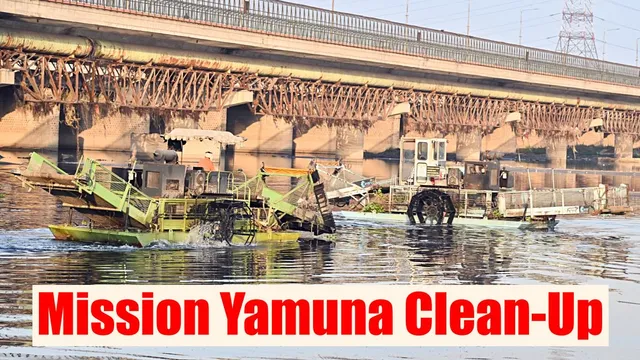- By JE News Desk
- Tue, 18 Feb 2025 08:19 PM (IST)
- Source:JND
The drive to clean Yamuna river has been started in Delhi and a four-pronged strategy has been put in place to tackle the water pollution. The clean up drive will involve measures to remove trash and silt from the river stream while cleaning operations will be carried out in Najafgarh drain, supplementary drain and other major drains. The Yamuna river water pollution was one of the biggest poll issue in the recently concluded Delhi Assembly Election. The drive began on Sunday with the deployment of trash skimmers, weed harvesters and a dredger.
Additional Chief Secretary (Irrigation and Flood Control Department) Navin Choudhary on Monday visited ITO Chhath Ghat to inspect the cleaning of Yamuna which was started on the instructions of Delhi Lieutenant Governor VK Saxena ahead of the government formation in Delhi. The official claimed that in three years the Yamuna will be cleaned and urged participation of all concerned authorities.
ALSO READ: Delhi Yamuna Cleanup: L-G Saxena Unveils 3-Year Strategy To Tackle River Pollution | Details
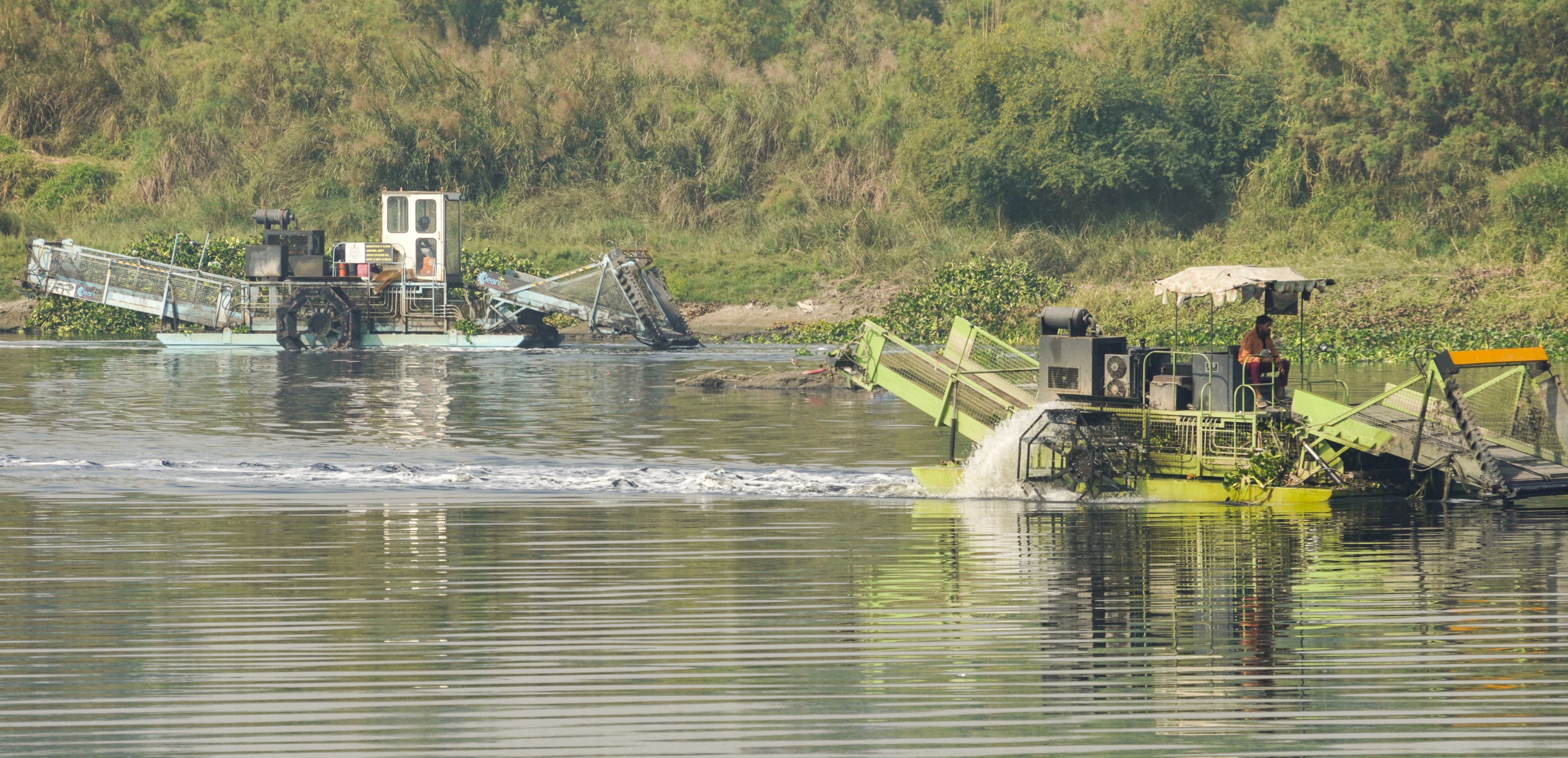
Cleaning work underway at the Yamuna river, in New Delhi, Monday, February 17, 2025. (PTI Photo)
Target To Clean Up Yamuna By 2027
The Additional Chief Secretary informed about the action plan saying the Delhi government will fully operationalise all sewage treatment plants in the city. He said six new plants are being set up to completely stop the flow of sewage and industrial waste into the Yamuna in the next three years. The Yamuna river will be cleaned by December 2027, he asserted.
"As per the directions by the highest level, we will clean Yamuna in the next 3 years before 2027. The work will be done in 3-4 steps. The first is to remove the solid waste from the river bed," said Choudhary. The other steps include checking the flow of untreated sewage and industrial effluents through a fully functional Sewage Treatment Plant (STP).
VIDEO | Delhi: Yamuna river cleaning drive begins with a four-pronged strategy.
— Press Trust of India (@PTI_News) February 16, 2025
(Full video available on PTI Videos - https://t.co/n147TvqRQz) pic.twitter.com/4xYHbkIGCf
Yamuna Turns Poisonous
The Yamuna river faces severe pollution due to untreated sewage, industrial effluents, and waste from major drains. Its water quality has deteriorated, affecting marine life as well as public health.
- The Yamuna flows a distance of 22 km between Wazirabad to Okhla in Urban Delhi. This stretch contains 76 per cent of the river’s pollution.
- More than 350 crore liters of wastewater and sewage are discharged directly into the Yamuna through 18 major drains.
- From 2000 to 2024, the Yamuna has remained heavily polluted for over two decades.
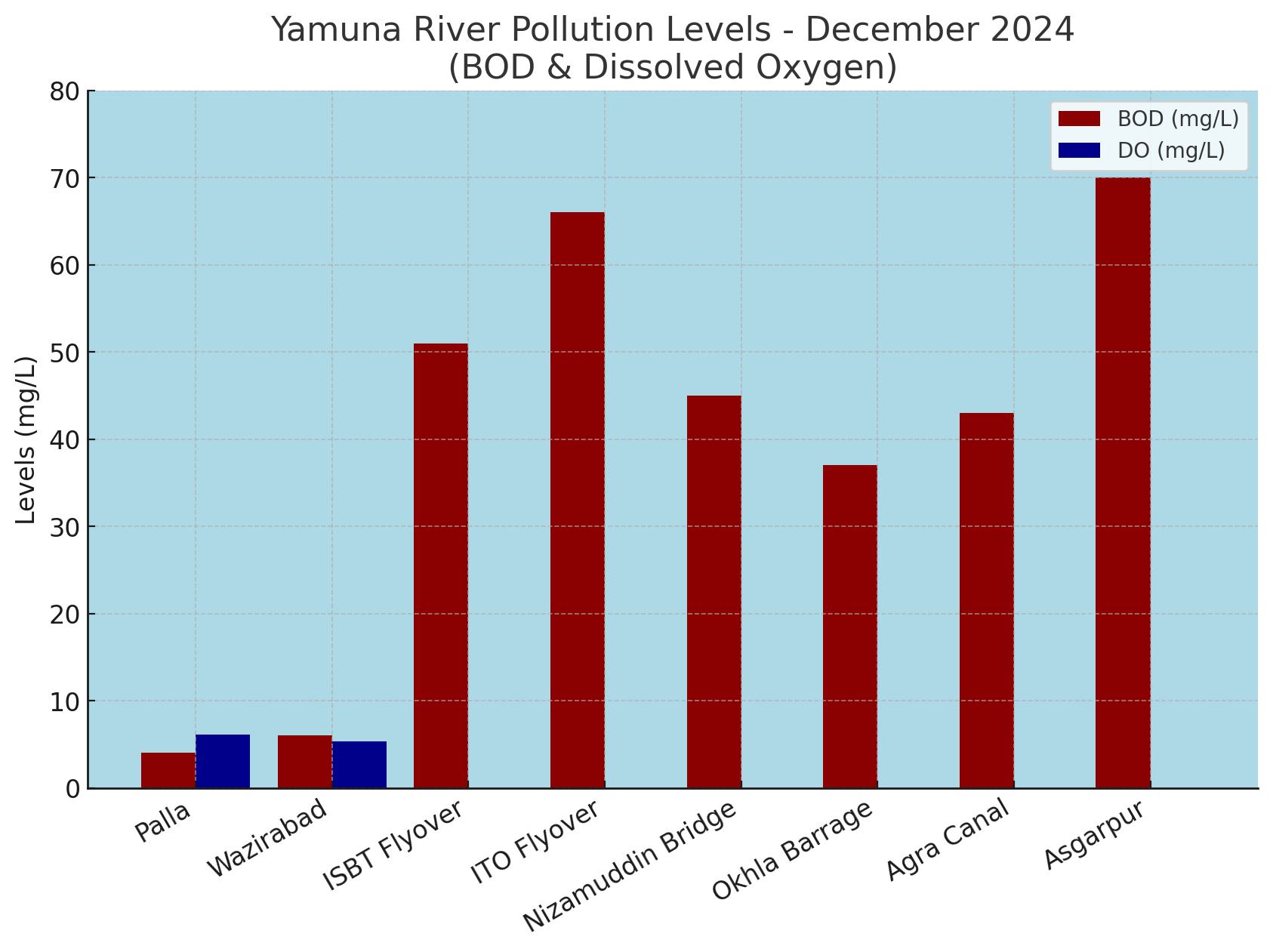
Yamuna Water Pollution Level
- The contaminated water contains phosphate and acid, which form a toxic white foam resembling soap.
- When the Yamuna river enters Delhi from Palla village, the faecal coliform level is recorded at around 1,100 MPN, but it rises drastically to 79,00,000 MPN by the time it reaches Asgarpur in Uttar Pradesh. The acceptable level of faecal coliform in water is 500 Maximum Probable Number (MPN) per 100 ml. The water becomes unsafe once it exceeds 2,500 MPN.
- The dissolved oxygen (DO) content in the Yamuna is zero at most locations in Delhi.
- According to the Bureau of Indian Standards, the permissible ammonia level in drinking water is 0.5 ppm, but in the Yamuna, it reaches 8 PM.
Yamuna Cleaning Drive: From Haryana To Uttar Pradesh
The 52-km stretch of the Yamuna in Delhi, between Haryana and Uttar Pradesh border, will be cleaned, news agency PTI quoted Choudhary as saying. The river enters the National Capital Territory (NCT) of Delhi at Palla village and exits at Jaitpur, according to the Delhi Development Authority. In Urban Delhi, Yamuna flows for a distance of 22 kilometers from Wazirabad Barrage to Okhla Barrage.
Choudhary said that seven machines have been installed to remove solid waste, water hyacinth and weeds from the river and the work will continue for the next few months.
'Strict Action Will Be Taken Against Violators'
The Additional Chief Secretary said that the target is to modernise and re-commission about a dozen STPs and complete the construction of six such plants by the end of 2026. Chaudhary said that all the STPs will be fully functional by December 2026. "Strict action will be taken if any untreated sewage is found discharged into the Yamuna when all the STPs are fully functional by December 2026," Chaudhary said.
He said that concrete steps will be taken to stop the flow of industrial effluents into the river, for which Delhi Pollution Control Committee (DPCC), Municipal Corporation of Delhi (MCD) and Industries Department will work together. The Additional Chief Secretary warned that industrial units discharging untreated effluents into the Yamuna would have to be shut down.
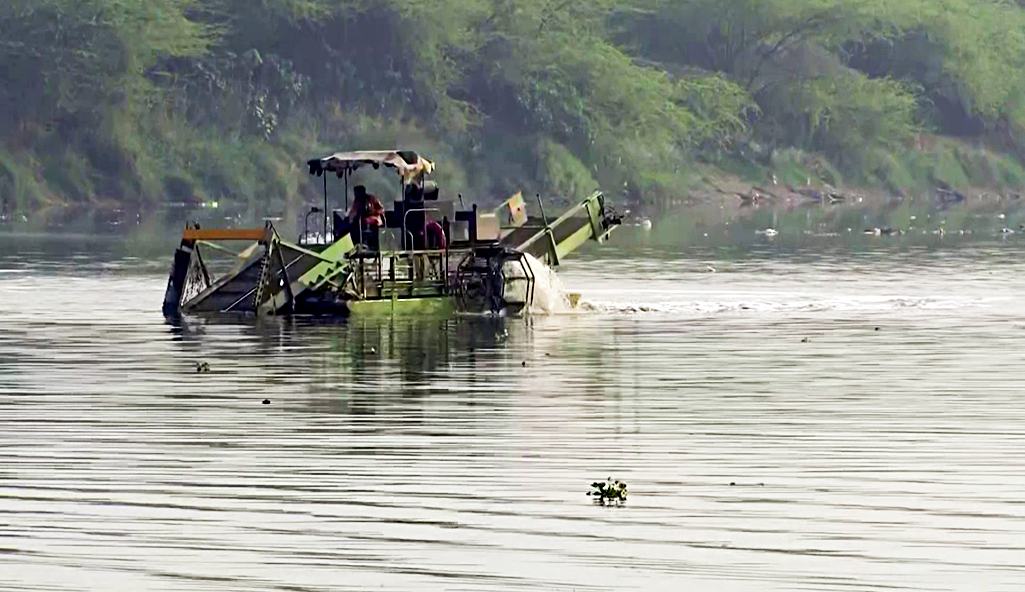
Yamuna River cleaning process underway by using a weed-harvested machine, in New Delhi on Monday. (Image: ANI)
He said that it will also be ensured that common waste treatment plants (CETPs) in industrial areas are functioning properly. Public awareness will be created to prevent people from immersing idols, throwing calendars and other such items into the river.
Around 28 to 30 major drains discharge untreated wastewater into the Yamuna, with the Najafgarh and Barapulla drains being the largest contributors. Additionally, numerous smaller drains merge with these, further carrying untreated water into the river, an official stated.
The Delhi Jal Board (DJB) is also working to prevent sewage from entering the river through storm drains. This initiative is expected to be completed within two to three months, Chaudhary said.
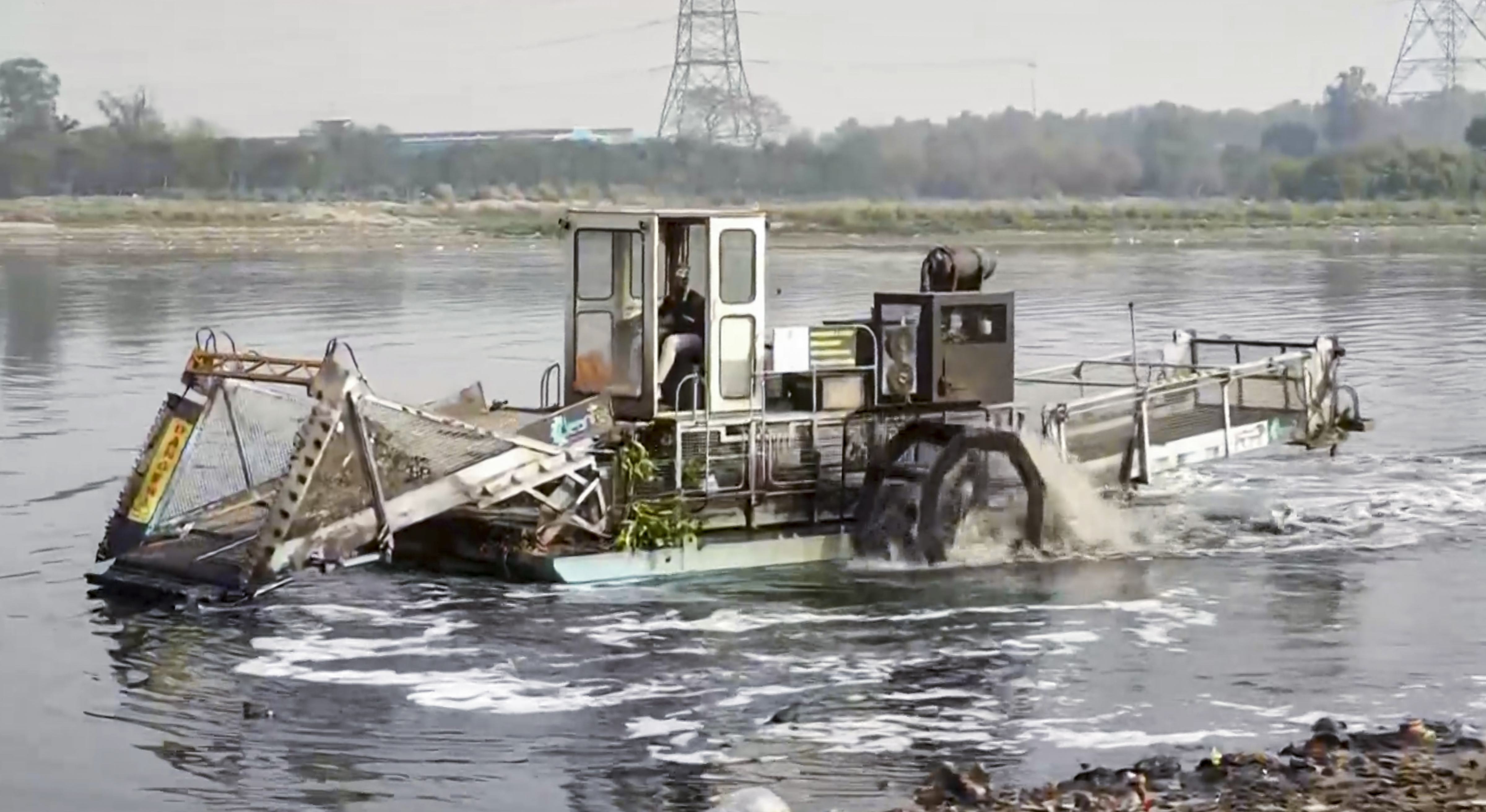
Cleaning work underway at the Yamuna river, New Delhi. (Image: PTI)
Govt Allocation For Cleaning Yamuna Over The Years
The Yamuna Action Plan was launched in 1993 and it covered 21 cities across Delhi, Uttar Pradesh and Haryana. By 2002, a total of Rs 682 crore had been spent on the project. In 2012, Rs 1,514.70 crore was allocated for Yamuna Action Plan Phase II.
Yamuna Action Plan Phase III had an estimated expenditure of Rs 1,656 crore, focusing on the rehabilitation of sewage treatment plants and trunk sewers in Delhi.
#WATCH | Yamuna cleaning process underway at Delhi's ITO. pic.twitter.com/nsdbeMqsaJ
— ANI (@ANI) February 17, 2025
Between 2015 and 2023, the central government provided Rs 1,000 crore to the Delhi Jal Board under the National Mission for Clean Ganga and an additional Rs 200 crore under Yamuna Action Plan-III.
In 2015, after coming to power, the Aam Aadmi Party (AAP) government spent Rs 700 crore on cleaning the Yamuna. The Ministry of Jal Shakti further allocated Rs 2,361.08 crore for 11 projects, including the Yamuna cleanup. Between 2018 and 2021, Rs 200 crore was allocated.
Lessons from River Thames
The condition of London’s River Thames improved only after sewage discharge was stopped. In 1858, the River Thames was declared a dead river due to severe pollution. The British government then invested heavily in sewage infrastructure and took strict measures to curb pollution. After 50 years of sewage treatment and pollution control, the water quality of the Thames improved significantly.

